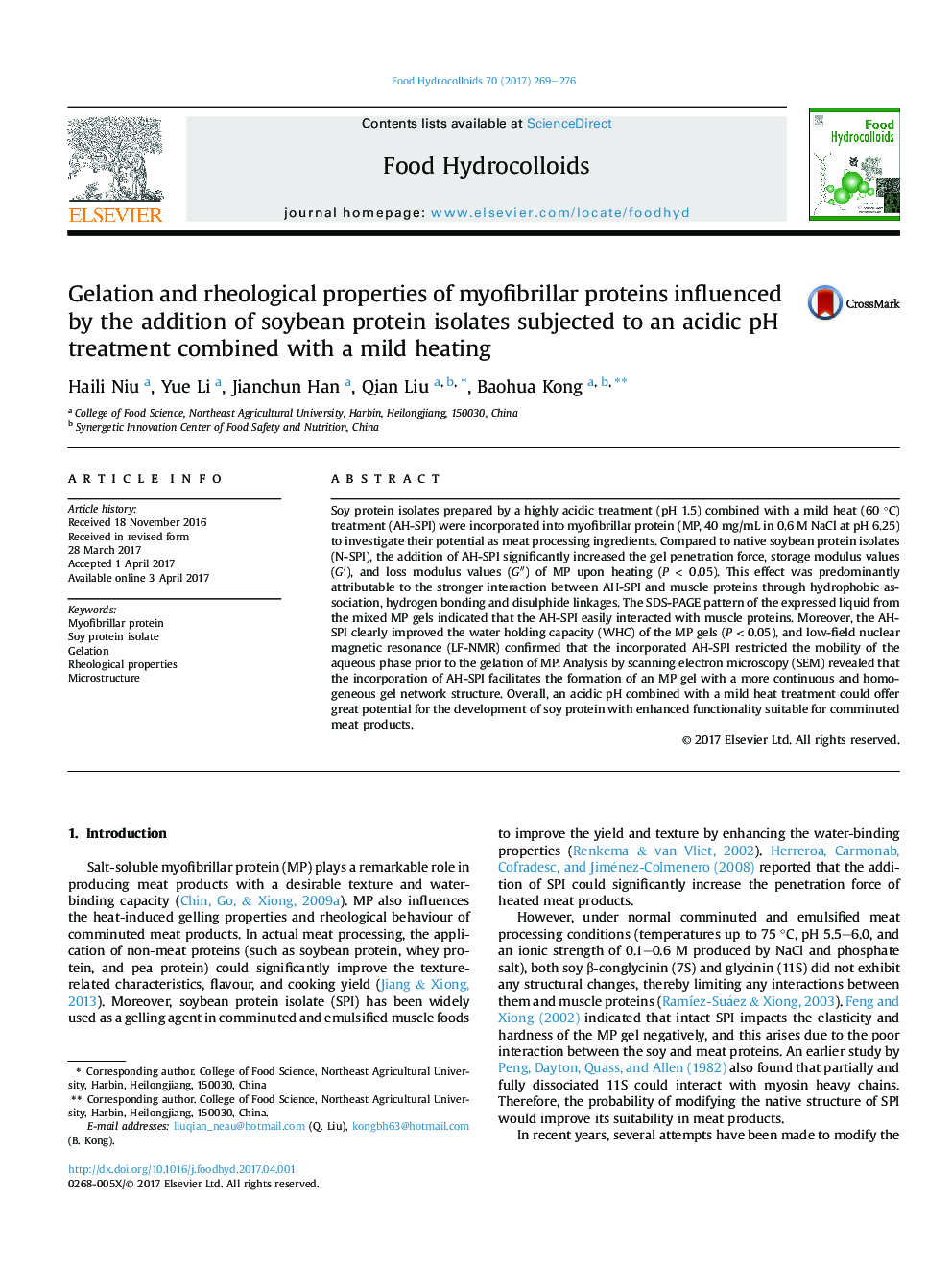| Article ID | Journal | Published Year | Pages | File Type |
|---|---|---|---|---|
| 4983874 | Food Hydrocolloids | 2017 | 8 Pages |
â¢AH-SPI improved the gel strength and the Gâ² values of MP were higher during heating.â¢AH-SPI/MP mixed gels displayed a more continuous and homogeneous gel network.â¢AH-SPI restricted the mobility of the aqueous phase prior to gelation of MP.
Soy protein isolates prepared by a highly acidic treatment (pH 1.5) combined with a mild heat (60 °C) treatment (AH-SPI) were incorporated into myofibrillar protein (MP, 40 mg/mL in 0.6 M NaCl at pH 6.25) to investigate their potential as meat processing ingredients. Compared to native soybean protein isolates (N-SPI), the addition of AH-SPI significantly increased the gel penetration force, storage modulus values (Gâ²), and loss modulus values (Gâ³) of MP upon heating (P < 0.05). This effect was predominantly attributable to the stronger interaction between AH-SPI and muscle proteins through hydrophobic association, hydrogen bonding and disulphide linkages. The SDS-PAGE pattern of the expressed liquid from the mixed MP gels indicated that the AH-SPI easily interacted with muscle proteins. Moreover, the AH-SPI clearly improved the water holding capacity (WHC) of the MP gels (P < 0.05), and low-field nuclear magnetic resonance (LF-NMR) confirmed that the incorporated AH-SPI restricted the mobility of the aqueous phase prior to the gelation of MP. Analysis by scanning electron microscopy (SEM) revealed that the incorporation of AH-SPI facilitates the formation of an MP gel with a more continuous and homogeneous gel network structure. Overall, an acidic pH combined with a mild heat treatment could offer great potential for the development of soy protein with enhanced functionality suitable for comminuted meat products.
Graphical abstractDownload high-res image (232KB)Download full-size image
